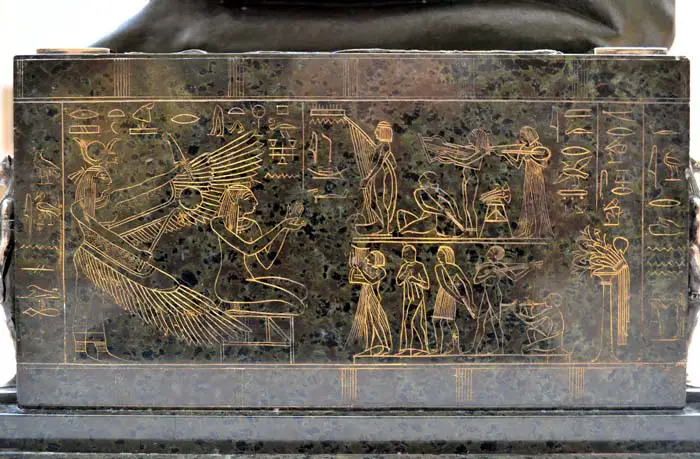Singing in Ancient Egypt
Musicianship was highly regarded in ancient Egypt and singing was no exception. There are references to many during the era who were considered outstanding singers, including Amen Inaros, whose mother was also a songstress. Singers became quite common among females who were related to high officials and they often officiated at ceremonies.
Music was an important part of many ceremonies in the Egyptian culture with many inscriptions of songs found in tombs to be sung to the accompaniment of harps. Researchers believe that the songs found in the tombs were more than likely sung by priests and priestesses.
Clapping of hands during singing was an integral part of the culture during ancient Egypt, considered sacred. In some professions, such as grinding corn, those performing the task would chant, or sing, praises to the master of the house.

© ketrin1407 – Relief of Musicians
Ancient Egyptian Dancing
Not much is known about dancing in ancient Egypt, although there are depictions of dancing during the enthronement of a new king. There do not appear to be any depictions of men and women dancing to music together in ancient Egypt and their form of dance may have had Nubian influences. This type of dance became popular in Rome and parts of the Sudan still dance in this manner today.
It appears that dances in ancient Egypt were similar to modern ballet, meant to be expressive, and some appeared to include gymnastics. On special occasions, female servants or harem members were chosen to dance slow, elegant steps which more than likely alternated with acrobatic movements. Dancing was also part of the religious celebrations of the time.
Click here to learn more about Dancing in Ancient Egypt
Depictions of Arm Movements
One theory that developed among scholars who have studied facts about music in ancient Egypt, one that has been largely disproved, was that depictions of arm movements in hieroglyphics were used to communicate pitch to the musicians. However, recent research indicates that the arm movements were simply responses to songs today where people raise their arms and move in time with the music.
It is possible that in some of the depictions, the arm movements may be indicating where a musician should start or stop, but in all likelihood they are just people enjoying a song. One Terracotta figurine found by archaeologists may depict music notes, but there is not much more than a few horizontal lines crossed by vertical strokes. It is not until the Greek Period that a papyrus with musical notations was discovered, but the music and notes are Greek, not Egyptian.
There is no doubt that music played an important part of ancient Egypt, even prior to the end of the Persian rule. With musical instruments found in tombs that have been inscribed with the names of gods and goddesses, as well as depictions in hieroglyphics of musicians, singers and dancers, it appears that music has been a part of daily life for thousands of years.
Facts About Music in Ancient Egypt
- Songs were played during religious ceremonies and even in the tombs after people died.
- Like today, songs were heard while people worked, for royalty in palaces and even on battlefields during times of war.
- Egyptian music, based on the holes found in flutes of the time, was a minor pentatonic scale of five tones without half-tones.
- As ancient Egyptians conquered other cultures, their tastes adapted to those of the new lands, and new sounds were introduced.
- In fact, Egyptians did not note music prior to the Greco-Roman period, indicating that it was not an important part of daily life until the end of the Persian rule.
- Around the 18th Dynasty, music seems to take on an erotic connotation in the culture, with men and women robed in semi-transparent clothing, lotus flowers and gestures from the banquet attendees.







































